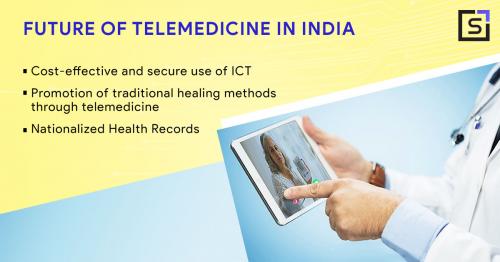Telemedicine: Revolutionizing Healthcare Access and Delivery
Introduction
In recent years, telemedicine has emerged as a transformative force in the healthcare industry, revolutionizing the way healthcare services are accessed and delivered. This innovative approach to medicine utilizes modern technology to bridge the gap between patients and healthcare providers, offering convenience, efficiency, and improved healthcare outcomes. In this blog, we will delve into the world of telemedicine, exploring its benefits, applications, challenges, and the impact it has on the healthcare landscape.
read more about Technology in Modern Healthcare – Advancements Shaping the Industry”
1. Understanding Telemedicine: A Brief Overview
Telemedicine, also known as telehealth, involves the use of communication technology to deliver healthcare services remotely. It enables patients to consult with healthcare professionals without the need for in-person visits, making medical care accessible even to those in remote or underserved areas.
2. The Advantages of Telemedicine
2.1 Increased Accessibility and Convenience
Telemedicine breaks down geographical barriers, allowing patients to receive medical consultations and treatment from the comfort of their homes. This level of accessibility is especially beneficial for individuals with mobility issues, chronic conditions, or limited access to transportation.
2.2 Efficient Healthcare Delivery
By offering virtual appointments, telemedicine reduces waiting times and streamlines the healthcare process. Patients can schedule consultations more conveniently, leading to quicker diagnosis and treatment plans.
2.3 Cost-Effectiveness
Telemedicine can result in cost savings for both patients and healthcare providers. Virtual consultations are generally more affordable than traditional in-person visits, and they help reduce overhead expenses for medical facilities.
2.4 Improved Outcomes for Chronic Care Management
Patients with chronic conditions require continuous monitoring and management. Telemedicine platforms enable remote tracking of vital signs and symptoms, leading to better disease management and reduced hospital readmissions.
3. Telemedicine Technologies and Applications

3.1 Live Video Conferencing
Live video conferencing is one of the primary modes of telemedicine. It allows real-time interaction between patients and healthcare professionals, facilitating comprehensive medical assessments and follow-ups.
3.2 Remote Patient Monitoring (RPM)
RPM involves the use of wearable devices and sensors to monitor patients’ health data, such as heart rate, blood pressure, and glucose levels. This continuous monitoring enables timely interventions and personalized treatment plans.
3.3 Mobile Health (mHealth) Apps
mHealth apps empower patients to manage their health actively. These apps offer features like appointment scheduling, medication reminders, and access to medical records, promoting patient engagement and adherence to treatment plans.
3.4 Store-and-Forward Technology
Store-and-forward technology allows medical images, test results, and patient information to be securely transmitted to specialists for review and consultation. This facilitates collaborative care and expert opinions, especially in rural or remote areas.
4. The Role of Telemedicine During the COVID-19 Pandemic
The outbreak of the COVID-19 pandemic highlighted the significance of telemedicine in ensuring continuous healthcare delivery while minimizing infection risks. Telemedicine became a vital tool for diagnosing and managing COVID-19 cases, as well as addressing other medical needs during lockdowns and travel restrictions.
5. Addressing Challenges and Concerns
5.1 Data Security and Privacy
Telemedicine raises concerns about the privacy and security of sensitive patient information. Healthcare providers must employ robust cybersecurity measures to protect patient data from potential breaches.
5.2 Digital Divide
While telemedicine offers vast benefits, it also exacerbates the digital divide, as not everyone has access to reliable internet connections or the necessary technology. Efforts are needed to bridge this gap and ensure equitable healthcare access.
5.3 Licensure and Cross-State Practice
The practice of telemedicine across state lines presents legal and licensure challenges for healthcare providers. Streamlining licensing processes and creating interstate telehealth regulations are essential for maximizing telemedicine’s reach.
6. The Future of Telemedicine

The future of telemedicine holds great promise. Advancements in artificial intelligence, virtual reality, and 5G technology are expected to enhance telemedicine capabilities further. We can envision a healthcare landscape where telemedicine plays a pivotal role in preventive care, chronic disease management, and personalized treatment plans.
Conclusion
Telemedicine is a game-changer in the healthcare industry, offering a novel approach to delivering medical care. Through increased accessibility, improved efficiency, and advanced technology, telemedicine is revolutionizing healthcare access and delivery, positively impacting patients’ lives worldwide.
FAQs
1. Is telemedicine as effective as in-person medical consultations?
Yes, numerous studies have shown that telemedicine consultations can be just as effective as in-person visits for many medical conditions, especially for follow-ups and routine care.
2. Can telemedicine be used for emergency medical situations?
While telemedicine is beneficial for non-emergency consultations, it may not be suitable for life-threatening situations that require immediate attention. In emergencies, patients should seek in-person medical assistance.
3. Are telemedicine services covered by insurance?
Many insurance providers now offer coverage for telemedicine services. However, coverage policies may vary, so it’s essential to check with your insurance company to understand your benefits.
4. How can older adults adapt to using telemedicine?
Telemedicine platforms are designed to be user-friendly, and healthcare providers can offer assistance in setting up virtual appointments. Additionally, family members or caregivers can provide support to older adults during virtual consultations.
5. Are there any limitations to telemedicine consultations?
Telemedicine has its limitations and may not be suitable for all medical conditions. In some cases, in-person examinations and diagnostic tests may still be necessary for a comprehensive assessment.








 Viesearch - The Human-curated Search Engine
Viesearch - The Human-curated Search Engine

4 Comments